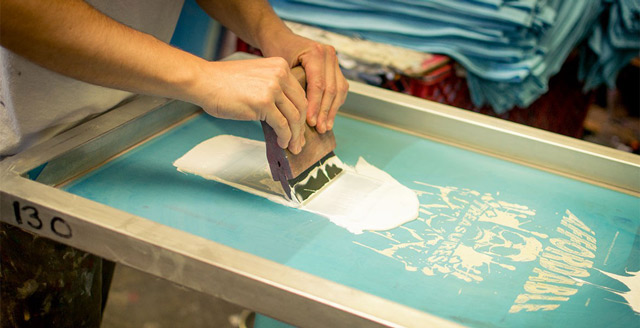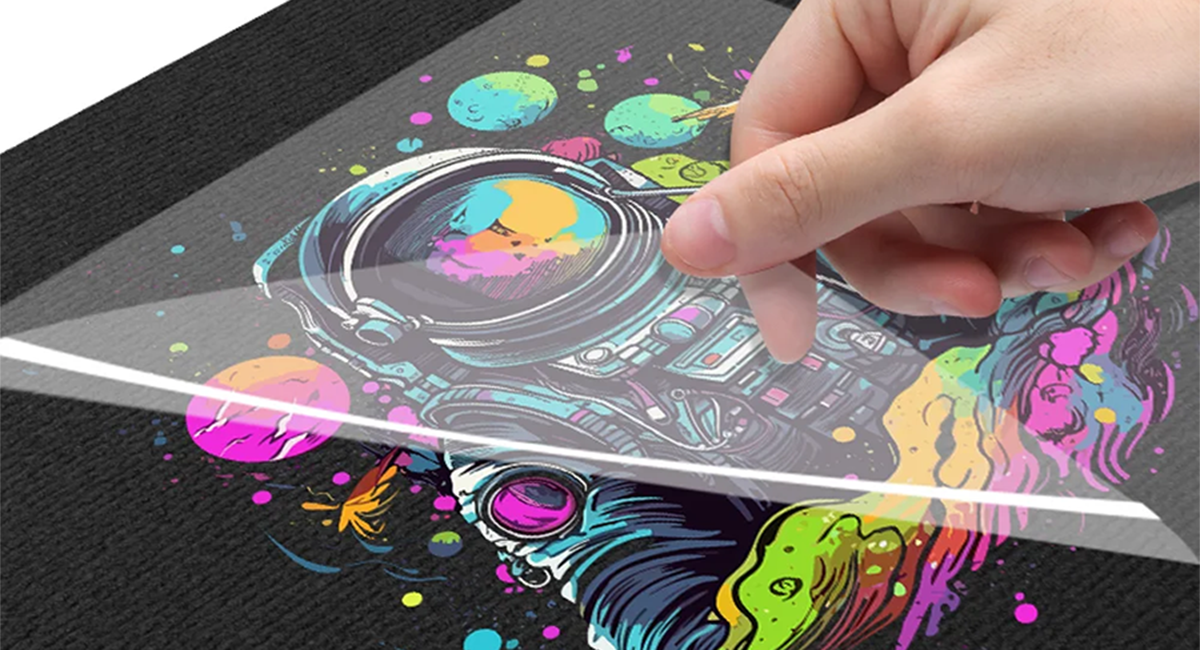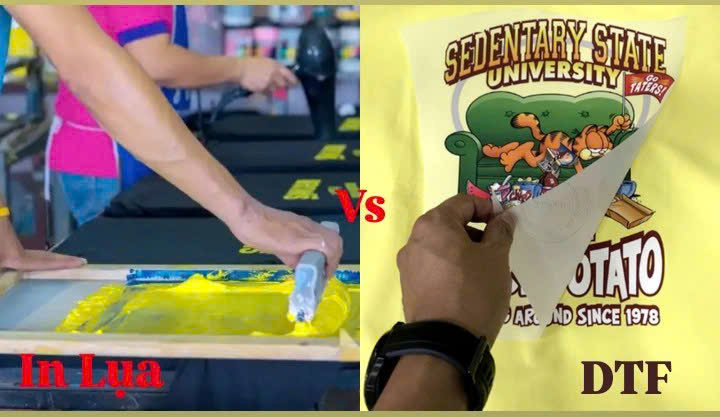The printing industry has undergone remarkable advancements with the introduction of a wide range of new technologies. Among these, Screen Printing and DTF Printing (Direct to Film) are two popular methods widely applied in fabric printing, especially on T-shirts. However, each technology has its own set of advantages and disadvantages, suitable for different purposes and production scales. This article will delve into comparing these two technologies to help you gain a comprehensive view and make the most appropriate choice
Screen Printing (or Silk Screen Printing): The Enduring Traditional Technique

Screen printing is a long-established printing technique based on the principle of ink permeating through a mesh screen. The printing frame is made from a wooden or aluminum alloy frame stretched with a mesh (originally silk, now primarily polyester). Areas that are not to be printed are sealed off with a special emulsion. Ink is poured onto the screen, and then a squeegee is used to press the ink through the mesh and onto the material’s surface.
Advantages:
- Low Cost: Especially when printing in large volumes, screen printing costs are highly competitive.
- Material Versatility: Can print on a wide variety of materials such as fabric, paper, wood, plastic, glass, etc.
- High Durability: The print has good colorfastness and excellent wash resistance.
Disadvantages:
- Limitations on Colors and Detail: Screen printing struggles to reproduce images with many colors, complex color gradients, or excessively small details. Each color requires a separate screen, which is time-consuming and labor-intensive.
- Production Time: Slow speed, requires time for screen preparation (setting up the stencils).
- Environmental Pollution: The inks and chemicals used in the printing process can cause environmental pollution.
DTF Printing (Direct to Film): The Modern Digital Technology

DTF Printing is an advanced digital printing method that allows images to be printed directly onto a specialized film (PET Film). This image layer is then transferred onto the material’s surface using heat and an adhesive powder. This process offers numerous advantages over traditional printing methods. The printed image is heat-pressed to transfer it from the film to the fabric.
Outstanding Advantages:
- Versatility on All Materials: This is the “highlight” of DTF printing. You can print on cotton, polyester, blended fabrics, silk, leather, and many other material types without changing the printing process.
- Simple, Time-Saving Process: DTF printing does not require a pre-treatment step for the fabric, allowing you to skip a costly stage, thus saving time and manpower.
- High Durability: DTF prints have high resolution, along with superior durability, being water-resistant, UV-resistant, and won’t peel after multiple washes. The thin adhesive layer ensures the print adheres firmly to the fabric surface.
- Economic Efficiency: The initial investment cost for a DTF printer and supplies is lower than for DTG printing. Specifically, this technology allows you to print batches of images onto the film first, and then gradually press them onto the shirts, which optimizes the production process.
Noteworthy Disadvantages:
- Cost per product is generally higher than Offset or Screen Printing when producing extremely large quantities.
- Prints that are too large in size may feel stiff or less breathable on the fabric surface.
When should one choose DTF Printing and when should one choose Screen Printing?

The choice of printing technology depends on your specific needs.
Choose Screen Printing when:
- You need to print large volumes (hundreds, thousands of products) with simple, low-color designs.
- You prioritize the lowest possible production cost.
- The product requires prints with high durability, unaffected by frequent washing.
- You need to print on non-fabric materials like paper bags, cardboard, glass, etc.
Choose DTF Printing when:
- You want to print complex designs, multiple colors, detailed images, or portraits.
- You need to print in small quantities, samples, or operate under a personalization model (print-on-demand).
- You want to print on a variety of fabrics, especially dark-colored ones without complex underbase processes.
- You require fast production speed and a streamlined process.
DTF Printing – A Leap Forward for Personalized Printing
Each technology holds its own distinct position. While screen printing maintains its role as the “king” of mass production with competitive pricing, DTF printing is emerging as the “star” of the digital printing era. DTF technology has addressed the limitations of screen printing, offering superior flexibility, speed, and quality, making it especially suitable for the rapidly growing trends in personalized printing businesses and small-batch orders.
